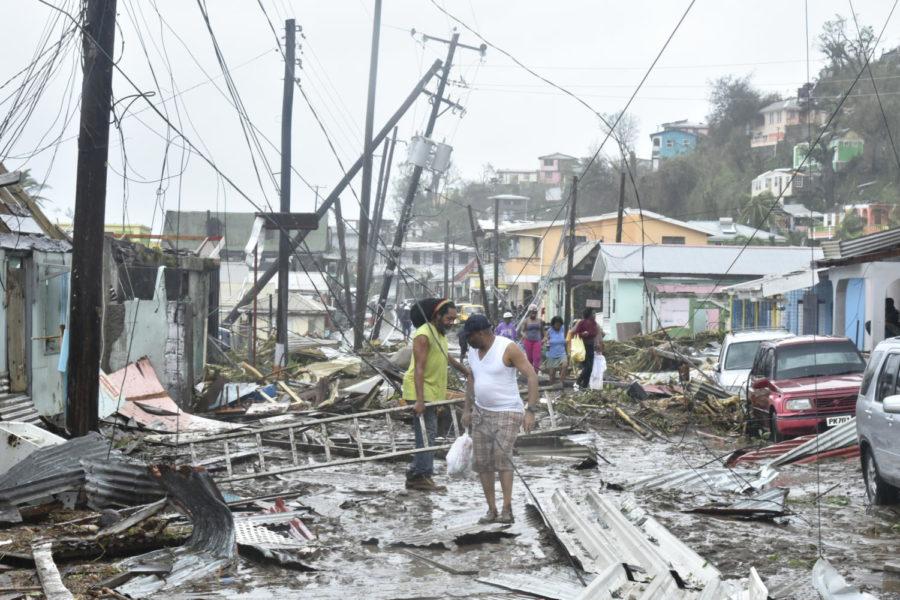Editorial: Be respectful when dealing with natural disasters
“Photographs taken by my Communications Team following the passage of Hurricane Maria. These photos only show the route between Castle Comfort (lower) to Roseau,” according to Roosevelt Skerrit.
September 25, 2018
It has been just over a year since Hurricane Maria first hit Puerto Rico, bringing a record amount of damage with it. The storm lasted from Sept. 16 to Oct. 2. After all the disaster and trauma that Hurricane Maria brought Puerto Rico, one year just isn’t enough time to recover.
This year, Hurricane Florence began to form Aug. 31 and hit the East Coast on Sept. 14. It brought great disaster to the Carolinas. The hurricane has flooded streets, tore down homes and forced the evacuation of citizens of the Carolinas. Those who had no way to evacuate were rescued from their once-safe areas. Still, with all the help that was sent, Hurricane Maria took almost 3,000 lives and Hurricane Florence took over 40 lives.
The real question is not how to turn back time and prepare those in Puerto Rico and the Carolinas, it is how to handle this natural disaster now that it has happened.
Donald Trump misled the public to believe that the news lies to everyone and made Hurricane Maria less of a disaster than it was. He states, “[we] did an unappreciated great job in Puerto Rico, even though [it is] an inaccessible island with very poor electricity and a totally incompetent mayor of San Juan.”
A year after Hurricane Maria, Trump’s Twitter ranted about the false death toll he was provided when he visited Puerto Rico after Hurricane Maria calmed down. He states the death toll was 50 times more than it was when he was originally told and there is no way it could have skyrocketed that much post-hurricane. No matter whether he thinks he is being lied to or not, he handled peoples’ deaths insensitively.
And Trump has yet to overcome his anger toward the “false numbers” he was given. On Sept. 13, he wrote, “3,000 people did not die in the two hurricanes that hit Puerto Rico. When I left the island, after the storm had hit, they had anywhere from six to 18 deaths … If a person died for any reason, like old age, just add them onto the list. Bad politics. I love Puerto Rico!”
However, Trump handled Hurricane Florence much differently. In the first few days of the storm, he tweeted, “Five deaths have been recorded thus far with regard to hurricane Florence! Deepest sympathies and warmth go out to the families and friends of the victims. May God be with them!”
In the wake of crisis, Trump needs to behave more rationally and take in all the facts of whatever disaster approaches him next before Twitter ranting about how journalists and Democrats are simply out to attack him.
Being president, he is looked to in times of disaster for guidance or support. Since his outrage during Hurricane Maria, he has taken a better approach to handling Hurricane Florence on social media, but there is still room for him to improve.
















